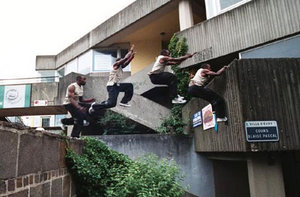I began working full-time in the new medium on December 7, 1993, when I took a job at Delphi Internet Services Corporation in Cambridge, Massachusetts. That was 5,000 days ago.
On that day, Rupert Murdoch’s News Corp. bought tiny Delphi. He wanted to start a major online service, much as he had recently purchased television stations and started the Fox television network, and he needed a core of expertise about online to do this. On that December 7th, he used a tactic that old media company traditionally use whenever they don’t understand something into which they want to venture: they purchase expertise outright and hope the knowledge and skills of that expertise will be absorbed by osmosis throughout their company. A corporate tactic that I call We Will Become What We Eat.
On that day, Delphi had approximately 37,000 subscribers. Yet this was in the early days of online, when CompuServe had 2 million subscribers; Prodigy 700,000; America Online 125,000; GEnie 100,000; Interchange less than ten thousand; and no more than a total of 6 million people worldwide had online access. Why didn’t Murdoch purchase a larger online service than Delphi? The size of what he purchased didn’t matter to him; after all, he’d formed the Fox Network from tiny UHF television stations. Furthermore, Delphi was his only choice because it was the only online service that wasn’t already owned by a large corporation. H. & R. Block owned CompuServe, IBM and Sears owned Prodigy, General Electric owned GEnie, Ziff Communications and later AT&T owned Interchange, and Quantum Computer Services had renamed itself American Online and become a publicly-traded company in its own right.
Moreover, Delphi had a latent asset that we can only now appreciate in retrospect. On that day in 1993, only one other company worldwide was supplying Internet access to consumers: even smaller Worldnet, a few blocks away in Cambridge. These two tiny companies were the only consumer Internet Service Providers in the world. Knowing what we know today about the popularity of Internet access, do you think that News Corp.’s failure to utilize its ownership of what was then the world’s largest ISP (one of only two ISPs in the world) is perhaps the greatest lost opportunity by a company in new-media? I certainly do.
But the world was different on that windy and partly overcast day on Porter Square, down from in Harvard Square in Cambridge. The world has changed a lot in 5,000 days. Yet there hasn’t been a single day since on which I’ve regretted leaving old media. I can now confidently state that the new medium is replacing the old. Five thousand days after December 7, 1993, please allow me to say what I’ve seen and restate why I am in this business.
I’ve not seen the up and down phases of the Internet bust and boom that the popular and trade press are fond of seeing since 1993. What I’ve seen is a straight line continually rising. The ups and downs, booms and busts, and other gyrations were investors’ and traditional media companies’ helical movements rotating around that upward line. When in 2000 investors lost their shirts in the Internet bust and quite a few traditional media company executives were saying, ‘I told you this online thing was just a fad,’ consumers’ use of that ‘online thing’ was rising as steadily as it had during the Internet boom, no matter if investors had lost shirts and wingtips.
Nonetheless, it’s fun arbitrarily categorize things. I could categorize the skyrocket of online as having had four stages during the past 5,000 days.
- The first was the geek or computer aficianado stage, when you needed a bit of technological skill to use online. Too many people who work in new-media nowadays believe that online began with the Web; the 6 million consumers who were already using online belie that belief. Nevertheless, traditional media companies back then believed that online was a fringe version of home teletext or at best a text service that their audiotext staffs should examine for commercial opportunities. This stage began in the early 1980s and ended In 1994.That was the year in which Editor & Publisher magazine’s annual audiotext conference became its annual online conference.
- The second stage began on October 13, 1994, (5,058 days ago) with the release of Mosaic Netscape 0.9, Web browser software that could display graphics and photos. Though the World Wide Web had existed and been opened to the public since 1991, browser software had been capable of displaying only plain-text. (Delphi clients used Lynx browser software to access it). The release of Mosaic Netscape caused the popularity of the Web to skyrocket. This software destroyed online services that didn’t permit it or full access to the Web (services such as CompuServe and Prodigy, plus Murdoch’s Delphi due to executive missteps). Traditional media companies and their investors were caught unaware(a condition many still suffer). I remember asking a major newspaper’s online director during the summer of 1994 what she planned to do about the Web. “Why should we worry about the Web when our surveys show that most people in our market use Prodigy?” she replied. But millions, tens of millions, hundreds of millions, and then more than a billion consumers began gravitating onto the Web, and today even the flanks of garbage trucks feature URLs. It took a few years for major media companies and their investors to awaken and begin chasing those consumers. Few of those companies really understood why the consumers gravitated online.
(more…)

















